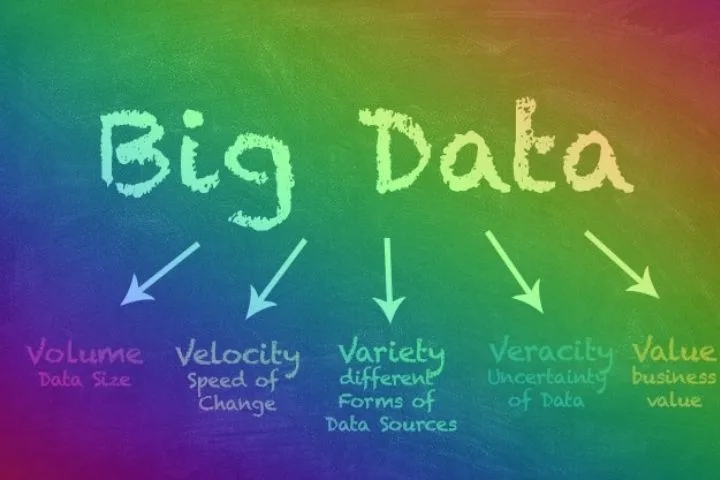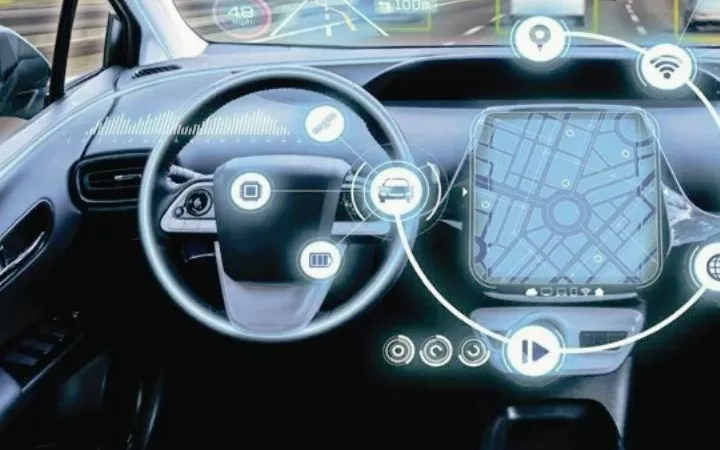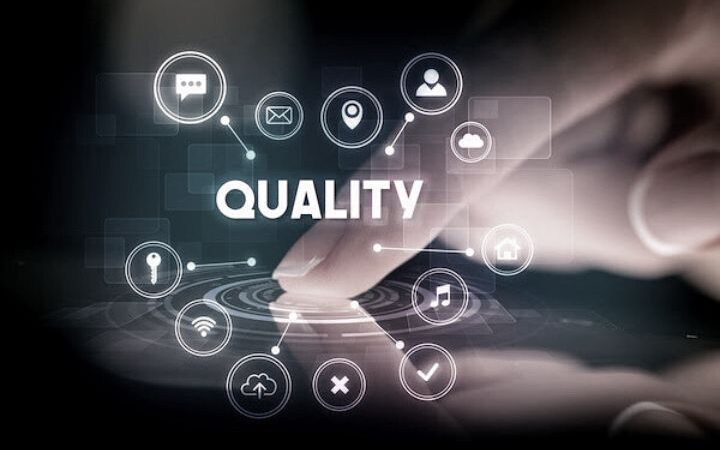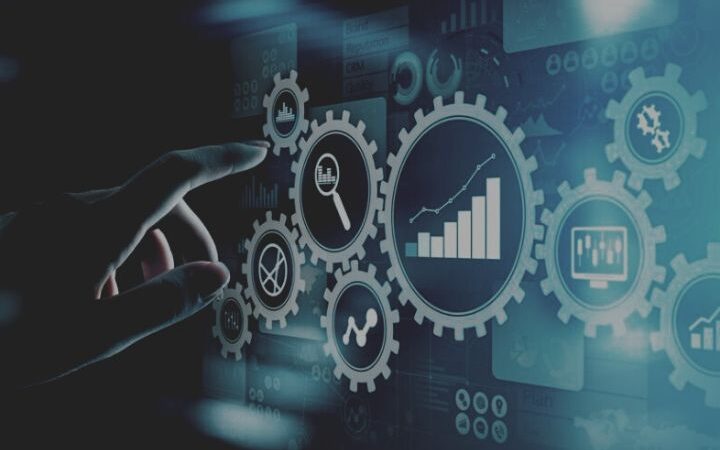Big Data Value: What Is It? Definition And Examples

As one of five characteristics of big data, “value” stands for the value of data. A value from data arises when a company can use data in an optimizing or innovative way. It is important to identify use cases and process them using data analytics or data mining to generate information or new business models. This creates big data value and a new era of data usage.
The 5 Vs. as characteristics
5 “Vs.” are usually used to define Big Data: Volume (quantity), Velocity (speed), Variety (diversity), Veracity (quality), and Value (value).
BIG DATA VOLUME: THE AMOUNT OF DATA
Anyone who reads “Big Data” for the first time will immediately think of the amount of data. This is one of the clearest factors that differentiate big data from traditional data.
However, there is no fixed guideline for the “Big” set but rather relates to the idea that the data volumes can no longer be processed. In the simplest case, this can be the amount of data itself, but the requirements of algorithms on hardware and software can also come up against limits.
Therefore, “volume” is one of the central characteristics of big data.
BIG DATA VELOCITY: RAPID CREATION AND MODIFICATION OF DATA
Another characteristic is Velocity. The speed with which data is generated or changed. It used to be common for data to be changed rarely or not at all. The generation speed was also usually relatively slow.
This factor has changed significantly with new technologies and platforms such as social media or the Internet of Things (IoT).
Today, data is generated, changed, adapted, and transferred in very large quantities. Small messages from devices – are generated every millisecond and require completely new software to be recorded and saved. Therefore, data speed (Velocity) is another distinctive characteristic.
BIG DATA VARIETY: UNSTRUCTURED DATA HAS GREAT POTENTIAL
The third characteristic is the variance of the big data. While only structured data was processed in business analytics for a long time, these boundaries have been broken. Data tables are processed and other data types such as images, videos, or text.
Big data variety poses new challenges for software, tools, data storage, and analysis. On the other hand, there is a lot of information and knowledge in this unstructured data. For example, a picture of a customer often contains more information than any customer database. As a result, companies are keen to explore these new types of data.
BIG DATA VERACITY: IS THE DATA TRUSTWORTHY?
In addition to the first three characteristics for big data, two more were added. The fourth feature is Big Data Veracity. This raises the question of the origin and quality of the data.
These questions are important because data can only be used meaningfully and sustainably if it is reliable. If the data quality is questionable or unclear how the data was generated, it cannot be used reliably for analysis.
BIG DATA VALUE: THE VALUE OF THE DATA
The fifth characteristic, i.e., whether and, if so, what value the data has. We want to define this characteristic in detail in the next sections and explain it using examples.
The fifth V: Big Data Value
Big Data Value is the fifth characteristic. It is a general term for whether data has a value and, if so, which one. This does not necessarily mean the purely monetary value, but above all, the content: What insights can we draw from the data?
Simply put, the idea is that in addition to other characteristics such as the amount of data, content, and quality, one should also ask whether the data has any value for the company or the organization.
WHAT TYPES OF VALUE CAN YOU ASSIGN TO DATA?
The most obvious value of data is that generated by owning the data alone. Most importantly, this is data that is so rare that it can create a competitive advantage or be sold.
Examples include industry-specific data, crawled data (e.g., Google), special customer data (e.g., account data), or device data (e.g., manufacturing machines). Each of these sets of data has intrinsic value as it has been collected and aggregated.
Another value that should apply to most companies is data that, when evaluated, allows processes to be improved. In most cases, information is extracted from the data utilizing data analysis and data mining and then made available to the technical experts in the departments.
Data for improvement relate to all operationally generated data such as CRM (customer data), a service system, ERP, web analytics, and many more. All of these data sources represent a fragment of the behavior of humans and machines; consequently, an evaluation allows them to be better understood.
The third value is data that can be used for new business models in digital transformation. Here, data is used in a way that creates innovation. Using artificial intelligence and machine learning, predictions or affiliations are determined to be established as a product or service.
All data can fall into this area, but they are mostly based on the premise that they are cleverly evaluated. Even publicly available or purchasable data can be exploited so that they have more than just the data value.
IS DATA WORTHLESS WITHOUT “VALUE”?
Conversely, the question arises as to whether data without a directly recognizable “Big Data Value” is worthless and should therefore be deleted or not recorded.
Of course, this has to be contradicted. You don’t know in advance which data can mean which value. On the other hand, it is important to make data usable regardless of its content, for example, by keeping the data quality high and maintaining a data catalog.
The difference is that some data can inherently produce value, while others cannot (yet). With these, it is then necessary to identify valuable analyzes or applications later on.
Data often only develop a value with increasing time and maturity of the data science skills.
HOW CAN YOU MEASURE THE VALUE?
The question that remains is how one can measure the value of data.
On the other hand, a simple method is to consider the use cases in which existing data can be used. If you can easily find several use cases in which this data can play a role, they also have value.
If you want to reinforce this basic “application value,” you can also consider other metrics such as uniqueness, innovation potential, evaluation difficulty, quantity, and data quality. It quickly becomes clear what value the data has.
Examples of valuable data: Big data value in practice
EXAMPLE 1: COMPANY’S CUSTOMER DATA
Comprehensive knowledge of its customers is one of the greatest competitive advantages a company can gain. Even with very basic data such as the address, order frequency, category usage, and newsletter interaction, a comprehensive analysis can greatly improve marketing measures, service, and product range.
Probably the simplest example is the division of customers into customer groups (e.g., utilizing clustering ) to then address them with individual newsletters, whether category-specific or price segments: Those who understand customers’ needs better and respond to them can hope for increased loyalty and conversion.
Of course, working with customer data becomes particularly attractive if you use advanced analytics, for example, to generate predictions (e.g., lifetime value or customer churn ), adjust the pricing, or optimize processes. Anything that helps to a) understand customers better and b) make your company more customer-centric has great value.
EXAMPLE 2: CRAWLER FOR WEBSITES OR SOCIAL MEDIA
While almost all companies have customer data, very few have crawled data. A crawler crawls the Internet (or only certain websites) and extracts information. The entire website (such as Google) or only specific information (such as pricing software). This accumulates a large amount of data, which mostly revolves around a specific topic.
Why is this data valuable when it is freely available online? The extraction, meaningful acquisition, and storage of the data (e.g., in a data warehouse ) has a great advantage in that it can be analyzed easily and effectively.
Especially when you consider that a crawler usually not only copies data from a website 1 to 1 but also merges statements from all social media sources, for example.
The resulting compendium of structured and unstructured data has its value: You are no longer dependent on manual work across multiple applications and channels but can concentrate on creating value through automation and machine learning.
Whether visualization, sentiment analysis, or the influence on sales figures: There are many use cases for which crawled data can and will be used.
EXAMPLE 3: IOT – THE INTERNET OF THINGS
The Internet of Things generates a lot of valuable data.
Another example of data of particular value is data from the Internet of Things. This data, which is usually only available within the company, records the status and interaction of so-called edge devices – i.e., electronic devices.
Examples of this are refrigerators, vacuum cleaner robots, machine sensors, automotive measuring devices. In any case, these devices transmit data over the Internet about the state, the environment, and how users or employees interact with it.
This database results in incredibly close interaction with people and the environment of the IoT devices. Where they are (geographical data), how they are used (interaction data), what their condition is (sensors), and much more can be recorded, sent, and evaluated.
Analyzes based on IoT data then lead to intensive insights into how devices are used, why machines or household appliances break, and whether the development team has considered all scenarios in the product concept.
As a result, you gain extensive knowledge of how to improve products or monetize the data. This forms the basis for both analog and digital innovation and thus clearly corresponds.
Conclusion of “Big Data Value” in companies
Simply put, the big data characteristic “Value” stands for the value of data. Whether its values through the uniqueness of the data, value through the opportunities to improve processes and knowledge, or innovation: there are many reasons why data contains the value.
That is not to say that data should be generated and stored blindly. There should always be opportunities to evaluate and use the data on the horizon. Still, it is the case today that storage space is very cheap; and long-term data collections can usually generate a very high value.
Every company should therefore consider very explicitly which data it can generate, which data it should acquire and how the data strategy must be designed to drive the digital transformation forward.






